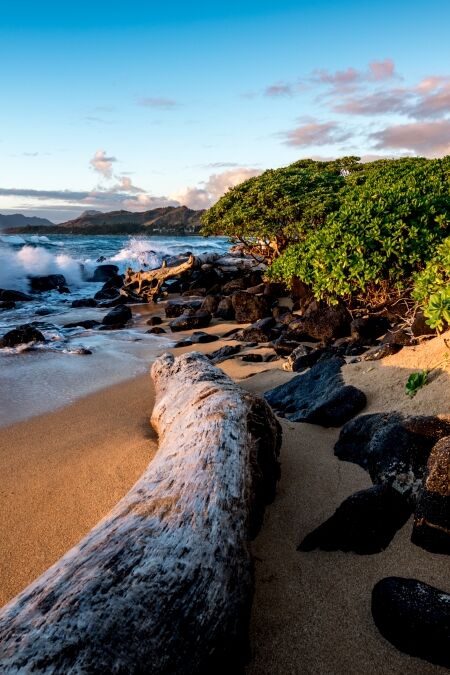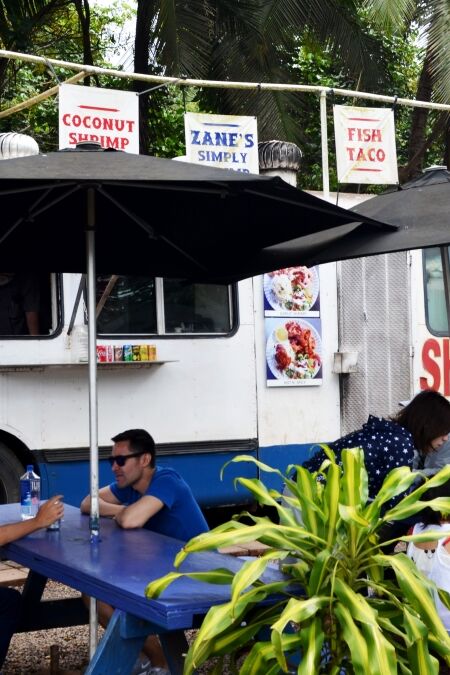Kauai Museum is a captivating gateway to the island’s vibrant history and culture. Established in 1924, it houses a remarkable collection of artifacts, art, and exhibits that celebrate Kauai’s rich heritage, from its native Hawaiian roots to its plantation-era history. This travel guide explores why the Kauai Museum is a must-visit destination, offering an immersive experience that deepens your appreciation for Hawaii’s past and traditions.
Highlights
- The Kauai Museum offers a deep dive into the island’s history, showcasing artifacts and art that reflect the lives of both indigenous and immigrant communities.
- Explore a variety of exhibits, including those focused on pre-Western contact lifestyles, the sugar plantation era, and the impact of World War II.
- Housed in the historic Wilcox Building, which dates back to 1924, the museum is recognized on the National Register of Historic Places, adding an extra layer of significance to your visit.
- The museum hosts numerous educational programs and workshops, such as painting classes and storytelling sessions about Polynesian navigation.
- The museum is best known for its eclectic collection of Kauai fine art, featuring works by local artisans. This not only supports local artists but also enriches visitors’ experiences with authentic Hawaiian creativity.
- Don’t miss the museum’s gift shop, which offers handcrafted jewelry, fine art, and unique collectibles.
History
Foundation and Historical Significance
The Kauai Museum in Lihue, Hawaii, established in 1960, began as a library in the Albert Spencer Wilcox Building, which was constructed in 1924. This iconic structure, recognized for its architectural and historical value, earned its place on the National Register of Historic Places and was designated a state historic site in 1979.
Mission to Preserve Heritage
Dedicated to preserving Kauai’s cultural heritage, the museum serves as a bridge between generations, educating locals and visitors alike. It collaborates with indigenous and immigrant communities to celebrate and sustain cultural traditions, offering exhibits and programs that honor the island’s rich history.
Diverse Exhibits and Collections
The Kauai Museum showcases Kauai’s journey through time, from ancient Hawaiian artifacts and cultural displays to exhibits on pivotal moments like Captain Cook’s arrival and the rise of sugar plantations. Each collection highlights the island’s unique cultural and historical narratives.
Community and Cultural Engagement
Beyond its exhibits, the museum enriches community life with events, workshops, and educational programs. Through storytelling, art classes, and cultural tours, it fosters a deeper appreciation of Hawaiian traditions while encouraging active participation from locals and visitors.
Museum Highlights
Eclectic Art Collection
The Kauai Museum boasts a diverse array of fine art, showcasing the creative talents of local artisans and reflecting the island’s rich cultural tapestry. Its exhibits feature photographs, plaques, and artifacts that narrate the stories of Kauai’s indigenous people and immigrant communities, offering a window into the island’s unique heritage.
Historical Significance
Located in the iconic Albert Spencer Wilcox Building, a structure listed on the National Register of Historic Places, the museum stands as a testament to Kauai’s evolving cultural legacy. Visitors can delve into pivotal moments in history, such as Captain Cook’s arrival and the era of the Hawaiian Monarchy, gaining a deeper understanding of the island’s past.
Educational Programs
Dedicated to fostering cultural awareness, the museum offers a variety of educational programs for all ages. From hands-on workshops like painting and lei-making to storytelling sessions that explore Polynesian navigation, visitors can actively engage with and learn about the rich traditions of Hawaiian culture.
Exhibits and Collections
The Kauai Museum offers a rich tapestry of exhibits that delve into the island’s history and culture. Visitors can discover cultural artifacts that illuminate traditional Hawaiian life and customs, alongside an extensive archive of photographs and documents that capture daily life, sacred rituals, and key historical events. The museum showcases exhibits on:
- Pre-Western contact lifestyles
- The sugar plantation era
- The impact of World War II
- Captain Cook’s arrival
- The Hawaiian Monarchy era
These exhibits provide insights into significant periods of Kauai’s history. Additionally, the museum features dynamic art galleries with rotating exhibitions, highlighting contemporary creations by local artists and providing a vibrant space for cultural expression.
Special Events and Activities
The Kauai Museum comes alive throughout the year with special events and activities that foster community engagement and cultural appreciation. Guests can join guided tours spotlighting ancient Hawaiian traditions, participate in interactive workshops like coconut weaving or hula dancing, and enjoy live performances featuring local musicians. These events create an immersive experience, making every visit to the museum both educational and entertaining.
Visiting Information
Hours of Operation
The museum welcomes visitors Monday through Friday from 9:00 AM to 4:00 PM and Saturday from 9:00 AM to 2:00 PM, providing ample time to explore its exhibits. It remains closed on Sundays and most major holidays.
Admission Fees
The museum offers a range of ticket options to suit all visitors. Admission is $15 for adults (ages 18-64), $12 for seniors (65+), and $10 for students (ages 8-17), while children under 7 enjoy free entry. Kamaʻaina (local residents) can also visit for $10, and members receive complimentary admission.
Tips for Visiting
- Arrive Early: Visit in the morning to avoid crowds and fully enjoy the exhibits.
- Plan Your Visit: Allocate 1-2 hours to explore the museum thoroughly.
- Check for Events: Look up the museum’s schedule for special tours, workshops, or performances during your visit.
- Dress Comfortably: Wear comfortable shoes for walking and light clothing, as Lihue can be warm.
- Photography Rules: Confirm if photography is allowed in specific exhibits before taking pictures.
- Visit the Museum Shop: Browse for unique souvenirs, local crafts, and books on Hawaiian culture.
- Ask Questions: Engage with museum staff for insights into exhibits and recommendations for local activities.
- Bring Your ID: Locals should carry identification to avail of kamaʻaina discounts.
- Stay Hydrated: Bring water, especially if you plan to explore nearby outdoor attractions.
Best Times to Visit
The best time to visit the Kauai Museum is during the morning hours, when it’s less crowded, allowing you to explore the exhibits at a leisurely pace. Weekdays are ideal for a quieter experience, as weekends and holidays tend to draw more visitors. If possible, plan your visit around special events, workshops, or cultural performances to enhance your experience and gain deeper insights into Kauai’s rich heritage.
Nearby Attractions
After visiting the Kauai Museum, explore more of Lihue’s charm with nearby attractions like Kilohana Plantation, where you can enjoy a scenic train ride and visit local shops. Head to Nawiliwili Harbor for stunning ocean views and a taste of Kauai’s maritime culture. For dining, treat yourself to local flavors at nearby restaurants offering everything from fresh poke bowls to island-inspired dishes, making your trip to Lihue a well-rounded cultural and culinary experience.
Frequently Asked Questions (FAQs)
The Kauai Museum is open Monday to Friday from 9 AM to 4 PM and Saturday from 9 AM to 2 PM, remaining closed on Sundays and most holidays.
General admission is $15 for adults (ages 18-64), $12 for seniors (65+), $10 for youth (ages 8-17), and free for children under 7 and active military personnel.
The museum features a variety of exhibits showcasing Hawaiian history, indigenous artifacts, fine art from local artists, and displays on significant events like Captain Cook’s arrival and the sugar plantation era.
Yes, the museum hosts cultural events, workshops, and storytelling sessions throughout the year, including painting classes and live music performances.
Absolutely! The museum offers engaging exhibits and activities that are suitable for all ages, making it a great educational experience for families.
Yes, there is a gift shop at the museum where visitors can buy handcrafted jewelry, fine art, collectibles, and other unique items that reflect Hawaiian culture.
How to Get There
By Car
To reach the Kauai Museum by car, start by heading towards Rice Street in Lihue, where the museum is centrally located. Coming from Lihue Airport, take a left onto Ahukini Road and continue straight for about two miles. Turn left onto Rice Street, and the museum will be on your right-hand side. Parking is conveniently available in nearby lots or on surrounding streets.
By Bus
The Kauai Bus system offers an affordable and eco-friendly way to reach the Kauai Museum. Take the bus route that stops near Rice Street and Kalena Street, as the museum is within walking distance of this intersection. Be sure to check the bus schedule in advance, as rural areas may have limited service hours, especially in the evenings.
Step Back in Time, Kauai Style!
The Kauai Museum stands as a cultural gem, offering a window into the island’s storied past and vibrant traditions. As a hub of history, art, and community, it weaves the tale of Kauai’s diverse heritage with every exhibit and event. A visit here is more than sightseeing—it’s a journey through time that enriches your connection to the Garden Isle. Be sure to include this treasure trove in your itinerary for an unforgettable dive into Kauai’s heart and history.




